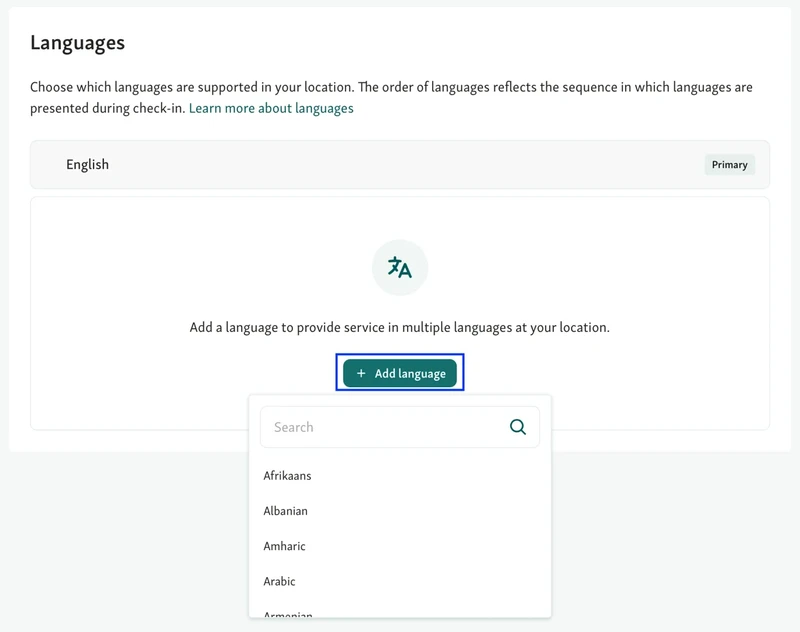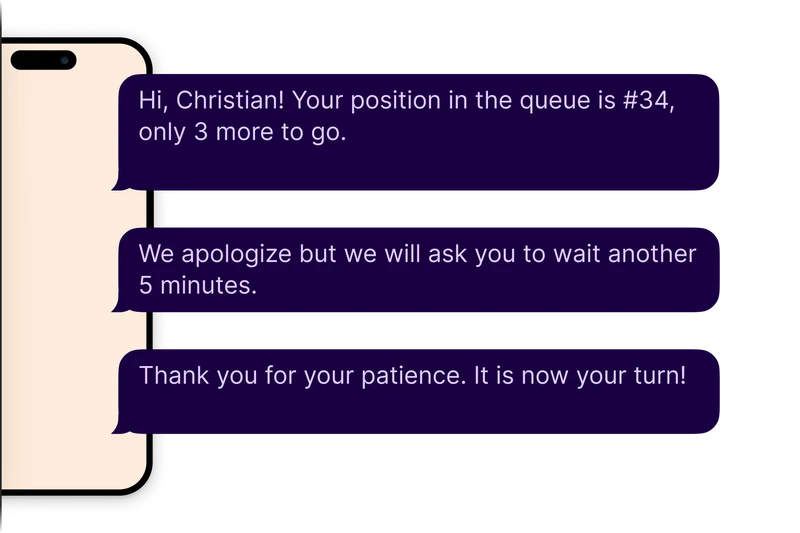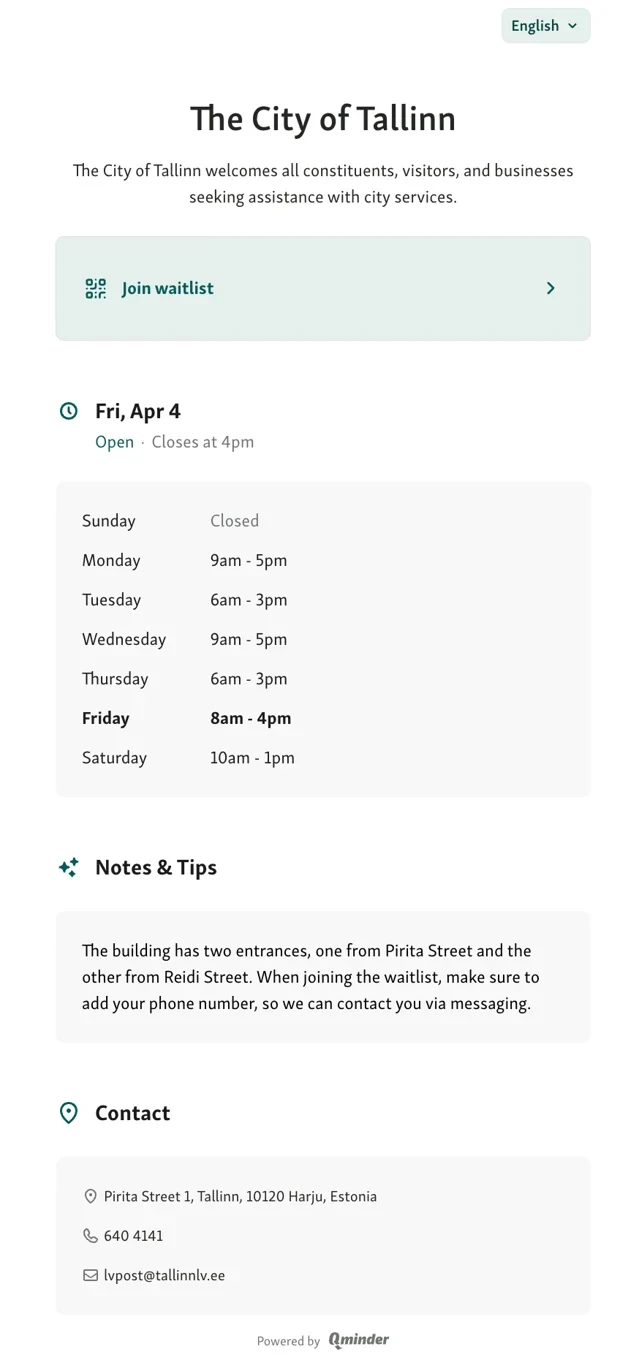Ticket-based queue management has been the go-to method for public sector agencies for years. People take a ticket and wait their turn. It’s straightforward and easy to understand.
But as more people use these services, the system starts to show its cracks. Long lines and crowded waiting areas make the experience stressful for everyone involved.
Virtual queues offer a fresh approach. They let people join a line from anywhere, cutting down on wait times and overcrowding.
This blog will take a closer look at the problems with the traditional ticket queue management system and explain why virtual queues are becoming the better choice for public agencies.
The Hidden Drawbacks of a Queue Management Ticket System
While ticket queue management systems have been widely used, they come with hidden drawbacks that affect both citizens and staff. Here’s a closer look at the main challenges:
1. Physical Presence Requirement
Physical Presence Requirement is a major limitation of a ticket queue management system. With traditional setups, citizens have to be physically present in the waiting area to keep their spot in line. This means no stepping out for errands or breaks without risking losing their place.
This setup leads to:
Wasted time standing or sitting around, often with little to do.
Limited flexibility, especially for those with tight schedules or mobility issues.
Crowded waiting areas that can feel uncomfortable and stressful.
For a public sector queue management system, this can frustrate visitors and lower overall satisfaction. People want convenience and respect for their time, but the queue management ticket system often falls short here.
See also - Why Your City or Government Department Should Switch to a Paperless Queue System
2. Lack of Real-Time Communication
Lack of real-time communication is a major drawback in many ticket queue management systems. Once citizens leave the waiting area, they have no way to know if their turn is coming or if there are delays. This uncertainty causes frustration and missed appointments. It especially affects those with mobility issues or tight schedules.
Key issues include:
No updates on wait times or delays after leaving
Anxiety about missing their place in line
Wasted time and extra trips to the service center
For a public sector queue management system to work well, clear communication is essential. Without it, a ticket queue management system falls short of providing the convenience citizens need.
3. Limited Data for Service Improvement
Ticket queue management systems often miss capturing useful data about how services are delivered. They track basic info like ticket numbers and times but rarely collect details that show where delays or problems happen. Without meaningful analytics, it’s tough for public sector agencies to spot bottlenecks or areas needing improvement.
This limits the ability to:
Understand why queues form or slow down
Measure staff performance or service speed
Make data-driven changes to processes
A public sector queue management system that only focuses on issuing tickets leaves decision-makers in the dark. To improve services, agencies need better data and insights beyond simple ticket tracking.
4. Inefficient Space Usage
Ticket queue management systems often cause crowded waiting areas. Since citizens must wait physically for their turn, public spaces fill up quickly. This creates discomfort and can raise safety concerns, especially during busy times or health crises.
Crowded spaces also increase stress for everyone involved:
Visitors feel anxious and impatient
Staff face pressure managing larger crowds
Overall service experience suffers
A queue management system that does not address space can hurt public trust and satisfaction. Better solutions help reduce overcrowding and create a safer, calmer environment for all.
5. Accessibility Gaps
Traditional ticket queue management systems often fall short in serving all citizens. Multilingual support is usually limited, making it hard for non-native speakers to understand instructions or wait times.
People with disabilities face additional challenges:
Kiosks or counters may not be physically accessible
Visual or hearing impairments are rarely accommodated
Online or remote options are often missing
These gaps reduce inclusivity and can frustrate citizens who need public services the most. A modern public sector queue management system should ensure everyone can access services easily and independently.
You might also like - Single-Line Queues Vs Multiple-Line Queues: Which One Is Better?
Why Virtual Queues Are the Future of Public Service
Virtual queues are changing the way public sector agencies serve citizens. They offer more flexibility, better communication, and safer waiting experiences. Here’s why they are becoming the preferred choice:
1. Freedom to Wait Anywhere
Real-time updates and communication make a huge difference for citizens waiting in public sector offices. Instead of guessing when their turn will come, they can see their position in the queue and adjust their time accordingly. This reduces frustration and helps people plan the rest of their day.
A queue management system supports this through:
Staff performance and service alerts – Agencies can identify delays and keep citizens informed immediately.
Multilingual customer-facing support – Updates are clear and accessible to everyone, removing confusion for non-native speakers.

With these tools, waiting becomes predictable and transparent. Citizens feel respected, and staff can focus on serving rather than managing lines. The system keeps both sides informed and reduces unnecessary crowding.
2. Real-Time Communication
A queue management ticket system often leaves citizens guessing when it will be their turn. Virtual queues change that. With live updates, people don’t have to stay in a crowded lobby or constantly check in at a kiosk. They receive timely notifications about their position, any delays, or changes in the service flow. This reduces frustration and keeps everyone informed.
Features that support this include:
SMS and email alerts – Citizens get instant SMS updates without needing to be on-site.
Custom service flow management – Agencies can move, forward, or reassign people between queues and keep them informed in real time.

This approach creates a smoother experience for citizens and reduces pressure on staff managing the lines.
3. Data-Driven Service Improvement
A ticket queue management system rarely provides meaningful insights. Virtual queues collect real-time data that helps public sector agencies understand how services are performing.
Agencies can see which counters are busiest, identify bottlenecks, and spot patterns in visitor flow. This data enables smarter staffing decisions and process improvements, which keeps the service running smoothly.
Here’s how service intelligence helps::
Service performance reports – Track how long each service takes and which areas face delays.
Staff performance analytics – Understand workload distribution and adjust staffing for peak hours.

Using these insights allows agencies to continuously refine operations and improve citizen satisfaction without guesswork.
4. Safer and More Comfortable Environments
Traditional take-a-number queue systems can create crowded waiting areas, which increases stress for both citizens and staff. Virtual queues allow people to wait anywhere, reducing congestion and creating a calmer environment. This also helps agencies maintain safety standards and comply with capacity regulations.
This is how these systems support this::
Reduced lobby crowding – Citizens can check in remotely using a website or online portals.
Real-time updates – Visitors know when to arrive, keeping the waiting area manageable at all times.
By giving citizens freedom and visibility, public sector agencies can improve comfort, safety, and the overall experience.
5. Inclusive and Accessible for All
Not all citizens can navigate a traditional ticket queue management system easily. Language barriers or mobility challenges often make waiting frustrating or impossible. Virtual queues make public sector services accessible to everyone.
Citizens can check in remotely, use apps in their preferred language, and access features designed for people with disabilities. This ensures that every visitor can interact with services on equal footing.

Key points to note are:
Multilingual interfaces – Citizens can choose the language that suits them best for a smoother experience.
Remote and accessible check-ins – People with mobility issues or other challenges can join the queue without visiting in person.
This approach makes services more equitable and inclusive.
Also read - The Best Alternative Solutions for a Take-a-Number System
Rethinking Public Sector Queues
Ticket queue management systems have been the standard for years, but they often leave citizens waiting, frustrated, and limited in how they can access services.
Long lines, lack of updates, and restricted accessibility make visits stressful and slow down operations. Virtual queues change that. They let people wait from anywhere, stay informed with real-time notifications, and access services at their convenience.
Agencies also gain insights into peak times, wait durations, and staff performance. Qminder makes this shift simple with a system that improves both citizen experience and agency efficiency.
Try Qminder today and make waiting easier for everyone.
Yes. By allowing citizens to wait remotely and optimizing staff allocation based on real-time data, agencies can lower overhead costs related to overcrowded waiting areas, reduce staffing inefficiencies, and minimize resource waste.
Virtual queue platforms can dynamically manage service flow during peak times. They automatically adjust queue priorities, notify citizens of updated wait times, and help staff allocate resources where they are most needed.
Most virtual queue platforms follow strict data protection standards, including GDPR and HIPAA compliance where required. They encrypt personal data and allow agencies to set retention policies to protect citizen information.





